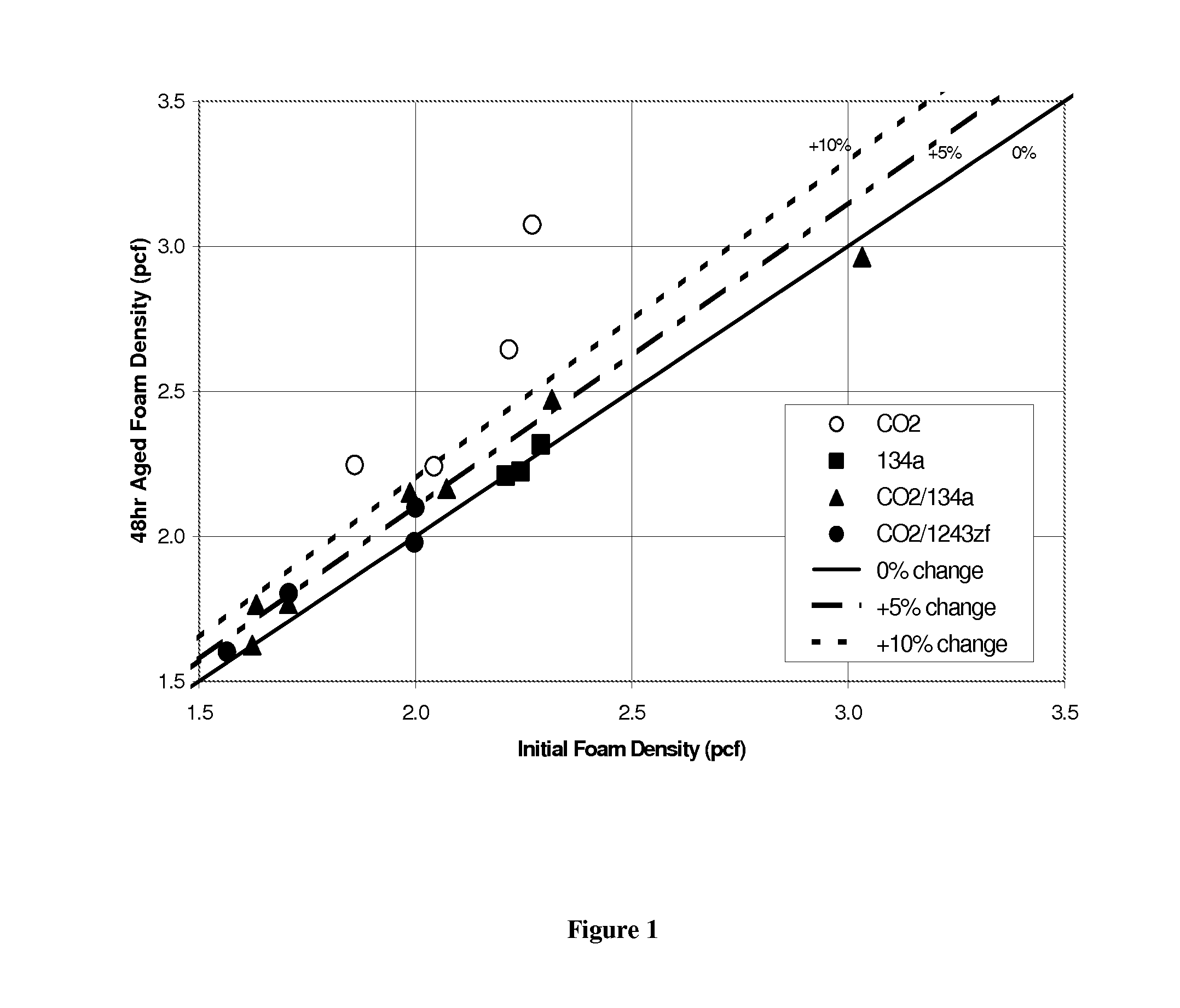Biodegradable foams with improved dimensional stability
a biodegradable foam and dimensional stability technology, applied in the field of formulations, can solve the problems of limited use of carbon dioxide and other commonly used blowing agents, low density foams often suffer from unacceptable post-production collapse, and achieve the effect of improving dimensional stability and low density
- Summary
- Abstract
- Description
- Claims
- Application Information
AI Technical Summary
Benefits of technology
Problems solved by technology
Method used
Image
Examples
example 1
[0057]A PLA foam was prepared using the method described above with 3.2 wt % CO2 and 4.4 wt % HFC-134a (1,1,1,2-tetrafluoroethane) as the blowing agent composition. After aging for 40 hours, the foam had a density of 40.5 kg / m3.There was no observed change in the appearance of the foam, and there was no end-shrinkage.
example 16
[0067]The permeation test described above was conducted with HFC-134a and with HFO-1234yf using a PLA film with a thickness of 3.2-3.5 mil. The permeation cell was operated with a back-pressure of blowing agent of 18 psig (high-pressure chamber) at 19° C. With HFC-134a a steady-state concentration was reached in the low-pressure side of approximately 1200 ppm in less than 2 minutes. With HFO-1234yf a steady-state concentration was reached in the low-pressure side of approximately 700 ppm in about 35 minutes and had reached 50% of the maximum value after about 5 minutes.
[0068]This example shows that the permeation rate of HFO-1234yf through PLA is less than that of HFC-134a under these conditions.
example 17
[0069]The permeation test described above was conducted with HFC-134a and with E-HFO-1234ze using a PLA film with a thickness of 4.0 mil. The permeation cell was operated with a back-pressure of blowing agent of 32 psig (high-pressure chamber) at 23° C. With HFC-134a a steady-state concentration was reached in the low-pressure side of approximately 1000 ppm in less than 2 minutes. With E-HFO-1234ze a steady-state concentration was reached of <150 ppm.
[0070]This example shows that the permeation rate of E-HFO-1234ze through PLA is less than that of HFC-134a under these conditions.
PUM
| Property | Measurement | Unit |
|---|---|---|
| Fraction | aaaaa | aaaaa |
| Fraction | aaaaa | aaaaa |
| Fraction | aaaaa | aaaaa |
Abstract
Description
Claims
Application Information
 Login to View More
Login to View More - R&D
- Intellectual Property
- Life Sciences
- Materials
- Tech Scout
- Unparalleled Data Quality
- Higher Quality Content
- 60% Fewer Hallucinations
Browse by: Latest US Patents, China's latest patents, Technical Efficacy Thesaurus, Application Domain, Technology Topic, Popular Technical Reports.
© 2025 PatSnap. All rights reserved.Legal|Privacy policy|Modern Slavery Act Transparency Statement|Sitemap|About US| Contact US: help@patsnap.com

